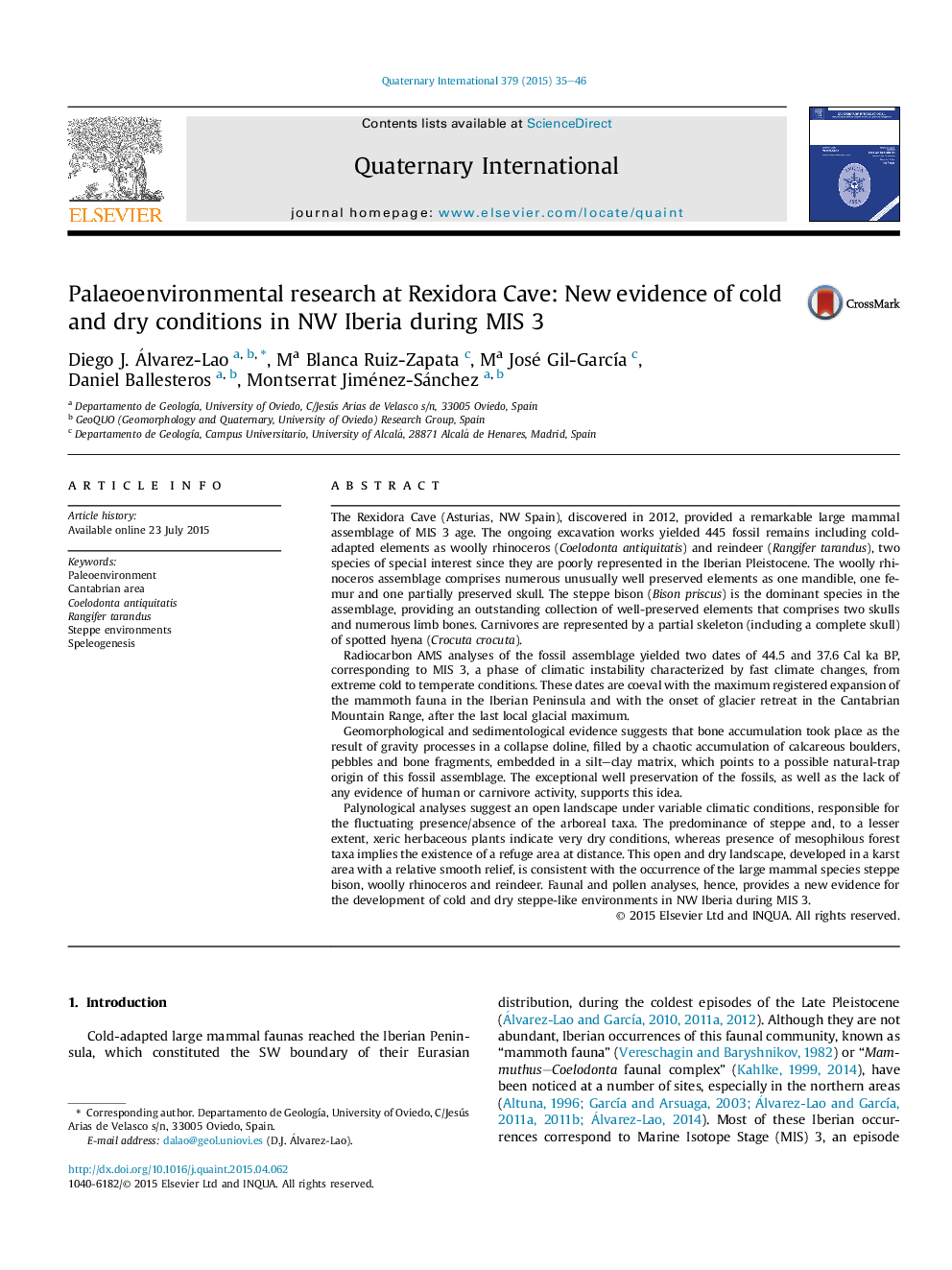| Article ID | Journal | Published Year | Pages | File Type |
|---|---|---|---|---|
| 1040647 | Quaternary International | 2015 | 12 Pages |
Abstract
Palynological analyses suggest an open landscape under variable climatic conditions, responsible for the fluctuating presence/absence of the arboreal taxa. The predominance of steppe and, to a lesser extent, xeric herbaceous plants indicate very dry conditions, whereas presence of mesophilous forest taxa implies the existence of a refuge area at distance. This open and dry landscape, developed in a karst area with a relative smooth relief, is consistent with the occurrence of the large mammal species steppe bison, woolly rhinoceros and reindeer. Faunal and pollen analyses, hence, provides a new evidence for the development of cold and dry steppe-like environments in NW Iberia during MIS 3.
Related Topics
Physical Sciences and Engineering
Earth and Planetary Sciences
Geology
Authors
Diego J. Álvarez-Lao, Ma Blanca Ruiz-Zapata, Ma José Gil-GarcÃa, Daniel Ballesteros, Montserrat Jiménez-Sánchez,
